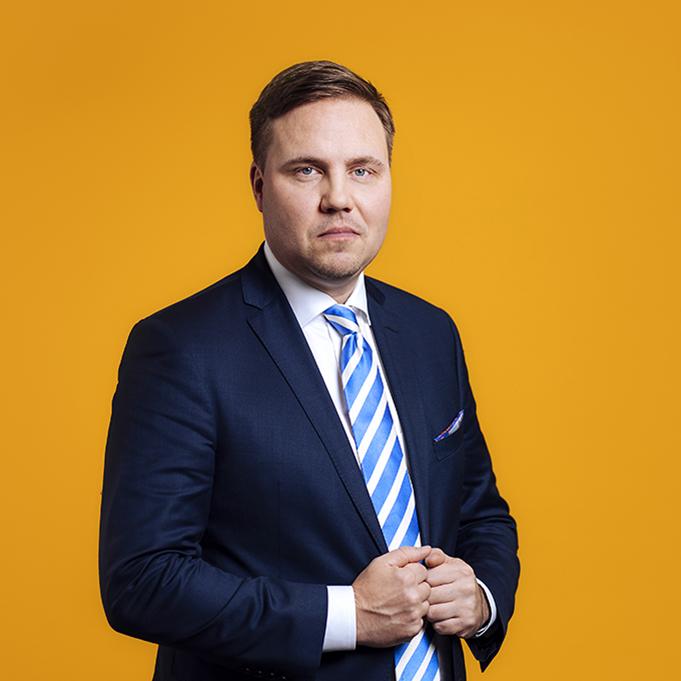Kimmo Koivurinne: A bad hand dealt to investors for early 2022
Despite the very difficult global situation and the challenging investment environment, Finnish earnings-related pension assets decreased by only about EUR 7 billion during the first quarter. At the end of March, assets amounted to EUR 248 billion. The decrease was mainly due to the decrease in the market value of listed shares. Another factor was the rise in interest rates during the first few months of the year, which also made fixed-income investments show a loss.
In this blog post, I take a closer look at events on the financial markets during the first quarter of the year. The recently published information on assets is available on our page Amount of pension assets. When analysing the development of earnings-related pension assets, it is important to consider long-term trends.

At the start of the year after Covid-19, the market had a hung-over mood resulting from more than a year of economic recovery and solid investment returns. At the turn of the year, the investor had many concerns in mind: Underlying the strong inflation were rising energy prices as well as component shortages caused by Covid-19 and disruptions in production chains. The real bogeyman on the market was the expected steps taken by the U.S. Federal Reserve and the consequent negative impact on stock returns. Uncertainty also stemmed from the resurgence of the coronavirus pandemic and the ominous grouping of Russian troops in the areas around Ukraine.
On the market, these uncertainties were visible as a search for security. Share prices fell in January in both North America and Europe. Shares showed the familiar symptoms of market stress, expressed as shifts in capital from growth stock to value stock. This so-called flight to quality phenomenon means that the risk level is reduced by shifting to safer investment instruments.
A slow start to the market effects of the war
For months, Western intelligence services had warned of Russia’s plans to attack Ukraine, but the idea of a full-scale war seemed irrational. Thus, it was also considered unlikely. However, after a long premonition, Russia launched its attack against Ukraine on 24 February. At the onset of the attack, financial markets — with the exception of the Moscow Exchange — reacted to the outbreak of war with surprising reserve. Nor did the international market reflect the usual panic during the following weeks, even though the Moscow Exchange was closed for three weeks owing to fear of capital flight. Led by the United States, the Western world convened to consider economic sanctions on Russia and material aid to Ukraine. This time, widespread support for sanctions against Russia were agreed fairly quickly, and the international front froze transactions with the Central Bank of Russia and other Russian banks. In addition to severing ties with banks, a large sanctions package was imposed to restrict the import and export of goods and all trade with Russia.
With the Moscow Exchange closed, investors expressed their views on the war, and Russian companies listed on Western stock exchanges lost up to 95 per cent of their market value within a short period of time. The Helsinki Stock Exchange also fell by more than ten per cent in a couple of weeks, the outcome not only of our geographical location but also of the higher-than-average dependence of Finland’s economy on Russia. Fortunately, the importance of Russian trade to Finland has decreased since the days of the Agreement of Friendship, Cooperation, and Mutual Assistance (the YYA Treaty). Last year, exports to Russia accounted for just over five per cent of Finland’s total exports. It is worth noting that, owing to energy and industrial raw materials, imports from Russia have been higher than exports virtually throughout the 21st century.
The direct impact of the Ukrainian war on equities was smaller than expected; the main indices fell between 5 and 10 per cent during the first quarter. However, the war exacerbated other phenomena already observed during Covid-19: the sharp rise in inflation last year remained high, and commodity and energy prices continued to rise. At the same time, interest rates rose sharply and, for example, the 12-month Euribor was still clearly negative at the end of February (-0.35%) and close to zero at the end of the quarter (-0.07%).
Uncertain outlook for the rest of the year
Although the utter catastrophe caused by the outbreak of war was avoided on the market, investment prospects for the rest of the year cannot be very bright. Inflation is forcing central banks to limit liquidity on the market, which will theoretically be reflected in lower stock return expectations. In addition, rising interest rates will dent large fixed-income portfolios and slow down investment, while rising commodity and energy prices will cool the economy.
Earnings-related pension system had a strong position at a difficult time
In this situation, however, the Finnish earnings-related pension system had an ace in the sleeve in terms of financing: the solvencies of earnings-related pension providers, which had hit record-high figures thanks to last year’s good returns. Solvency refers to the risk-bearing capacity of private-sector pension providers, i.e. how much assets each pension provider has in relation to its liabilities, where ‘liabilities’ means the pensions for which the pension provider is responsible. Investment income increases solvency capital, while in weak times on the investment market, solvency capital also weakens.
After the first quarter, the average solvency of pension insurance companies had fallen only slightly. The average solvency position of the companies was 1.7 times the solvency limit that the solvency capital must exceed. More about the key figures on our Solvency Regulation page. Strong solvency secures the funding of earnings-related pensions and reduces future pressure to raise pension contributions.